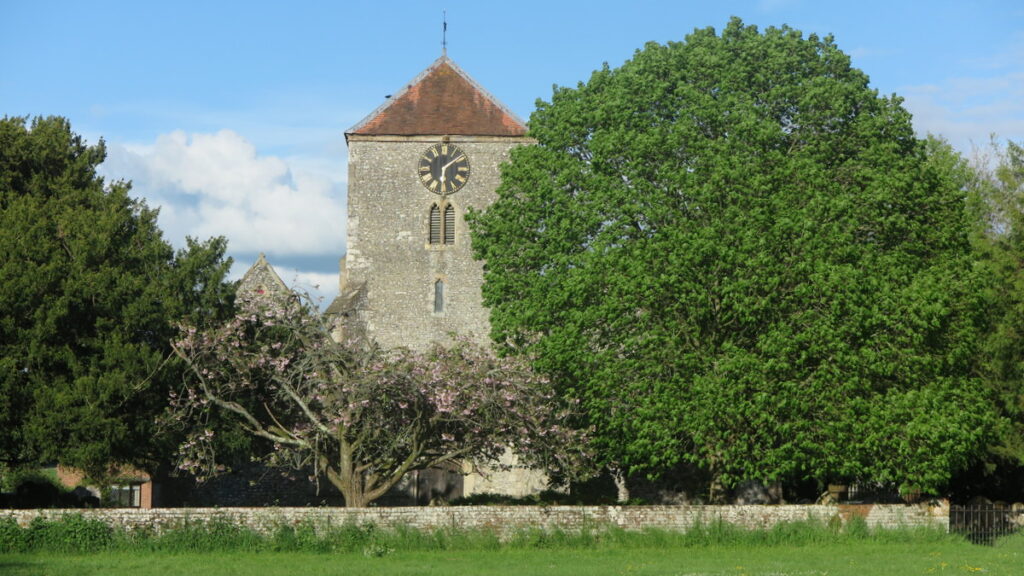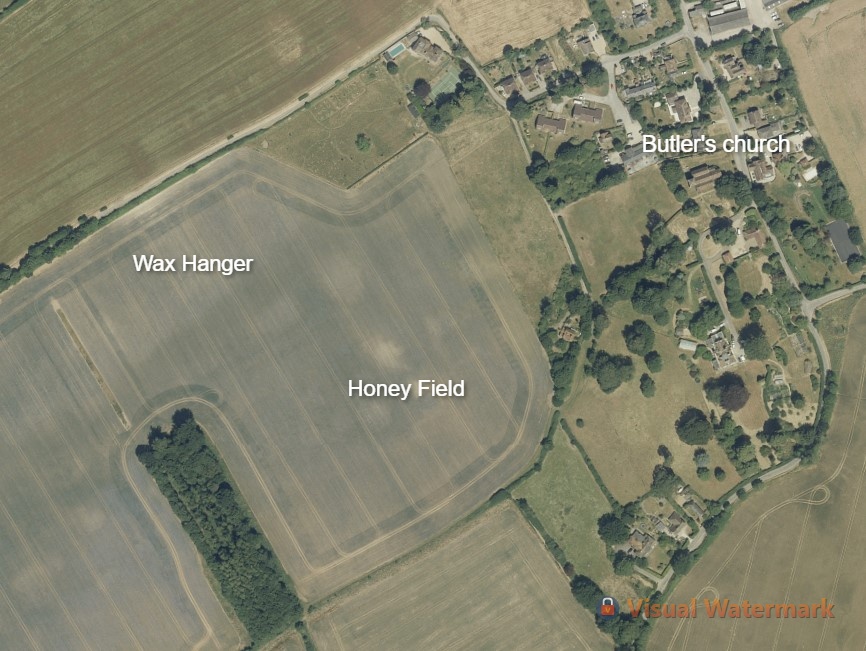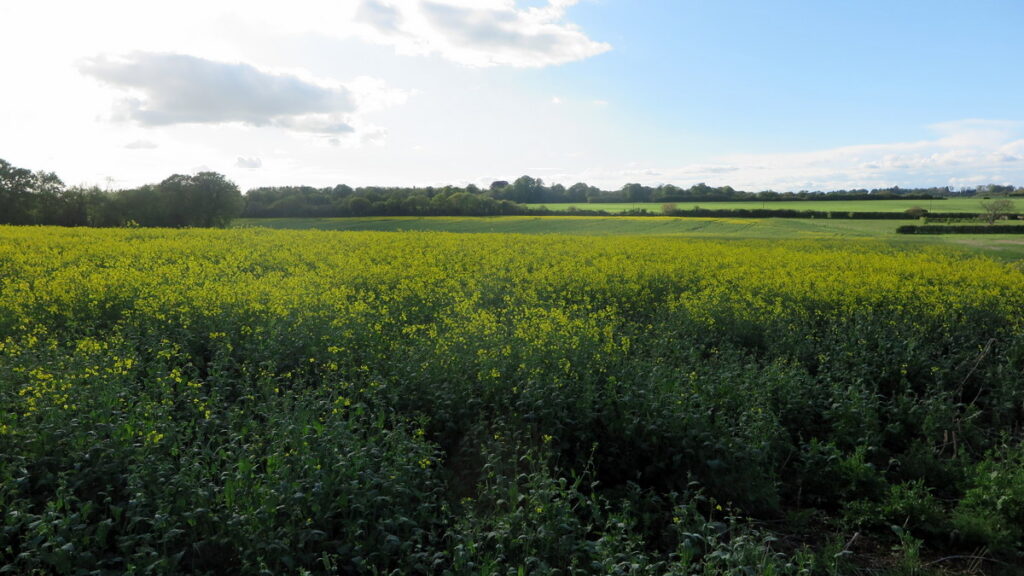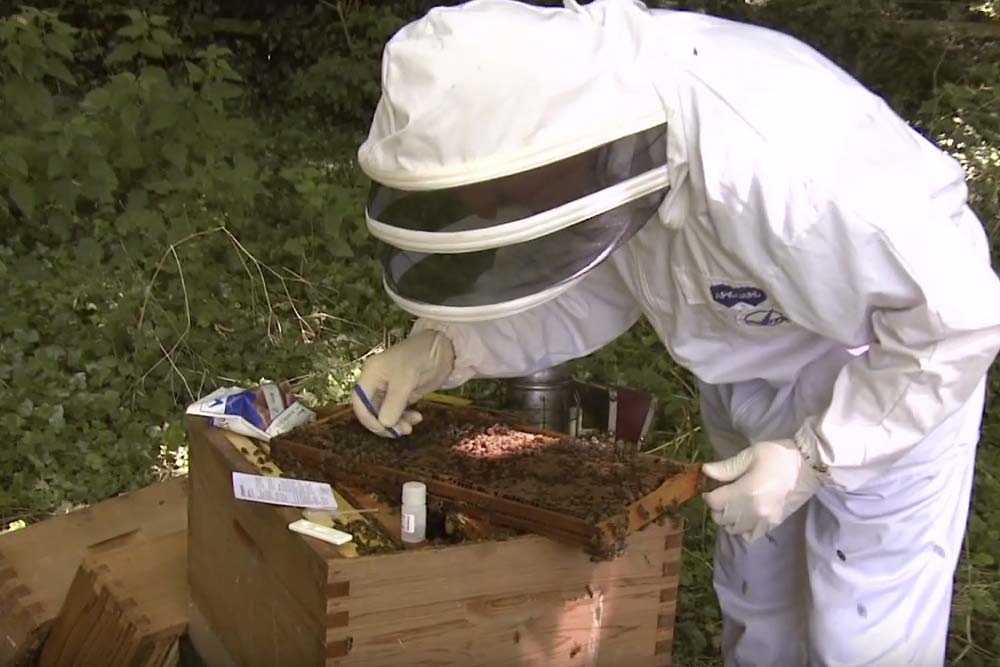Blog – bees, beekeeping & other sticky subjects
First DCA of the season
Vita Bee Health’s blogger is back on the DCA hunt. Here’s one near Vita’s offices in Basingstoke, Hampshire, UK.
Drones often get a bad rap. Varroa mites prefer their cells to breed in, they gather no honey, they use up hive resources … but, surprise surprise, without them there would be no more colonies. And, left to their own devices, free-living colonies will produce lots more drones than a managed colony, which is provided with worker foundation.
Although it’s known that many colonies in this area suffered badly (and died) in the winter, there are still plenty of drones around and they came out to do their patrol duty in a nearby drone congregation area (DCA).
A drone’s working day is short. At 16:41, drones were seen returning to one colony quite nearby at the rate of two every five seconds – obviously their day’s work was done.
What’s in a name? Honey Field and Wax Hanger
Just a few miles from Vita offices is the church of the father of English beekeeping, Rev Charles Butler. This year is the 400th anniversary of the publishing of the influential and landmark second edition of The Feminine Monarchie, so we’ve been doing a little research.
Rev Charles Butler’s church is in Wootton St Lawrence in Hampshire and, as in most places in England, the fields around his church have names. Many are mundane – The Four Acres, Three Acres, Church Yard Piece – but two have resonance – Honey Field and Wax Hanger. Could they have been named by Butler or during his time at Wootton?

The earliest reference we have found for the names so far is on the tithe map of 1840. (Tithe maps were created when payments for land were measured in cash rather than goods.) The two fields have since been merged but have retained the name Wax Hanger, an unusual name in any context. Hanger in Hampshire is a common name for a steeply wooded slope, but the one behind the church is just a gentle southeast-facing side of a shallow dry valley in the Hampshire chalk downland.


Honey Field is a relatively common name found in many parts of the country, but it is all too easy to jump to a honey bee connection. True, Honey Field can mean a place where bees are kept or where a rich nectar source grows. It’s certainly the latter this year as it is planted with oilseed rape. But it mightn’t have anything to do with nectar at all. Honey Field is sometimes an ironic name for a muddy, gloopy field. I asked the local shepherd about the field. Oh yes, it can be sticky, he said. The chalk there is covered by a clay cap and, when it gets wet, walking in it can be a boot-sucking experience.
Could Wax Hanger then be another ironic naming, suggesting that it’s the drier field? That would be such an anti-climax and we don’t want to believe that just yet! Surely the Butler connection must be implicated? Investigations continue.
There’s even a Mead Cottage Field nearby that seemed quite exciting. But that’s a definite disappointment. The use of the word mead in this context is almost certainly an abbreviation for meadow.
In August there will be special quadecentenary celebrations at the church: charles-butler400.co.uk
Foulbrood kits identify the disease and help analysis of foulbrood strains
Vita Bee Health’s foulbrood diagnostic test kits are routinely used by Britain’s National Bee Unit (NBU) to give fast results in the apiary when European or American foulbrood are suspected. And their usefulness doesn’t stop there.
Positive samples are then sent to the laboratories of the British government agency Fera Science Ltd where they are further analysed to see what strains of the disease are present. The results often show quite distinct geographical distribution of specific strains.
From 4,706 European foulbrood (EFB) samples taken over nine years, 30 EFB strains have been identified in Britain (a total of 45 when other countries are included). Sixteen strains are so frequent that they are subject to intense analysis. Their distribution often shows clustering and may point to how the disease spreads. The evidence suggests that one strain in particular will quickly spread around an apiary.
All this data can help to point towards more effect treatment and management strategies.

What is the secret of sunflowers?
Vita Bee Heath is sponsoring some Inside the Hive TV videos about honey bee health.
The varroa mite is thought to be the underlying cause of so many honey bee colony deaths. Vita Bee Health’s varroa-control treatments work well when administered properly but could there be other forms of help in the environment for the bees?
Here’s a video about the mystery of sunflowers and the varroa mite. Could there be a beneficial link for bees feeding off sunflowers even though the flower’s pollen is generally not thought to be the best for bees because of its relatively low protein content?
Those invading hornets
The media and others have been having a difficult time talking about hornets and showing the correct photo ID. It’s not that surprising because they are new insects come from other lands – and picture editors seldom sit beside the reporters. Here’s a quick referesher on some of the hornets.
Vespa crabro aka European hornet
Native across much of Europe and introduced to North America in about 1840, Vespa crabro is Europe’s largest native hornet. It is very distinctive because of its size and flash of yellow as it passes but it’s not seen very often (in Britain). It occasionally takes a bee or two but hardly ever poses a serious threat to honey bee colonies. (In contrast the common wasp [the yellow jacket in North America], Vespula spp., is much smaller, more numerous and sometimes attacks and destroy weak honey bee colonies.)
Vespa crabro workers c25mm long

Vespa velutina aka Asian hornet, yellow-legged hornet
Velutina is the hornet that arrived in pottery near Bordeaux in 2004 and has since spread at an alarming speed throughout France, around the north of Spain into coastal Portugal, into Italy, Germany and now seems to have been able to become established in the southern Netherlands. The tale of the fight back by the residents of the Channel Island of Jersey has become something of a legend on Facebook.
Velutina is now well established in parts of north-west Europe and eradication is deemed impossible, though many attempt to stop its spread into new territories.

Vespa mandarinia aka giant Asian hornet, murder hornet
Mandarinia is the one that the American media has delighted in dubbing the murder hornet – and British picture editors have been googling Asian hornet and, thinking they’ve found it, published an incorrect photo. It goes under various other names including the northern giant hornet and the Asian giant hornet. Whatever its name, it does look scary, as do its nest removers.

Vespa mandarinia is native to south and east Asia and was seen in the USA’s Pacific North West in 2019 and then in and Canada’s British Columbia. Nests were found and destroyed in 2021, but in 2022 there were no confirmed sightings and optimistic hopes that it may have been eradicated.

Vespa orientalis aka the Oriental hornet
Native to south-west Asia, Vespa orientalis has been spreading across Italy and was seen in Marseilles, France, in 2021 and Barcelona, Spain in 2022. On Malta, where it is now regarded as native, reports say it wiped out 70% of the island’s honey bee colonies. Vespa orientalis feeds on adult honey bees and larvae and plunders nests.
Vespa orientalis 25-35mm long

